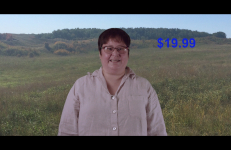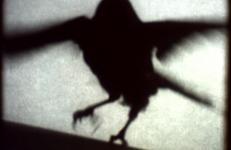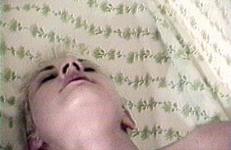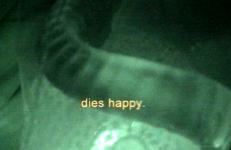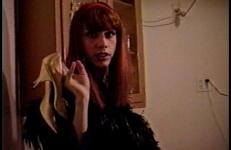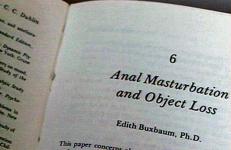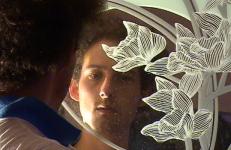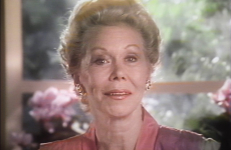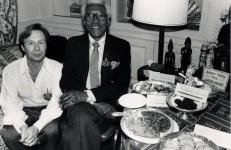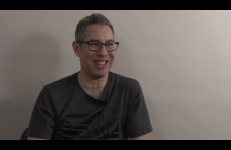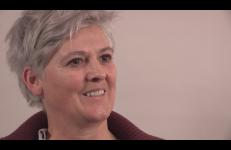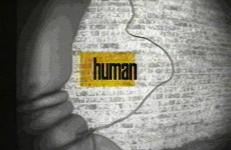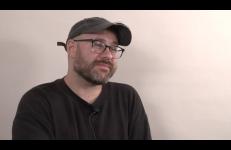A video diary about Cuthand's efforts to undergo artificial insemination. Cuthand contemplates a desire to have children and its relation to preserving Indigenous culture.
LGBTQ
2 Spirit Dreamcatcher Dot Com queers and indigenizes traditional dating site advertisements. Using a Butch NDN 'lavalife" lady (performed by director TJ Cuthand), 2 Spirit Dreamcatcher Dot Com seduces the viewer into 2 Spirit "snagging and shacking up" with suggestions of nearby pipeline protests to take your date to, and helpful elders who will matchmake you and tell off disrespectful suitors. It's the culturally appropriate website all single 2 Spirit people wish existed.
New to the 2 Spirit lifestyle? `Want to talk to someone in the Spirit and the Flesh instead of reading The Spirit and the Flesh? We have just the service for you! Call now and for only 19.99 a month you can get instant unlimited telephone access to traditional knowledge and support. We also provide monthly gifts for subscribers, call now and we can hook you up with this beaded whisk! Perfect for DIY spankings and pancakes the morning after your first snag!
"Renwick recounts a sad time in her life, when a friend was dying and she suddenly became aware of the presence of crows... [Renwick] craft[s] a lyrical and moving essay that works its magic through poetic accretion rather than narrative logic."
— Holly Willis, L.A. Weekly
In A Case for the Closet, Glennda Orgasm and Judy LaBruce host an episode of Closet Talk. They discuss why they are for people staying in the closet, and attribute coming out of the closet to the mediocrity, and thus downfall, of gay culture. Glennda and Judy establish their new movement, XXX Gay (replacing the postqueer movement), and explain its philosphies and values.
An artist looses faith in the world his brush depicts... A "Romeo’s" wounded heart causes him to shun intimate connections with others, and a "poets" struggle with domestic situations hinder his ability to create words of beauty... See and hear it all for yourself.
This title comprises Indigo Moods (2018), Fallen Angels (2013), and The Alphabet Garden (2018) which were compiled into this form by Mike Kuchar in 2022.
An animation developed from the collective experiences of a diverse group of LGBTQIA+ people to create a narrative. The result is a queer valentine having a fever dream.
Trans filmmaker Jules Rosskam's against a trans narrative is a provocative and personal experimental documentary investigating dominant constructions of trans-masculine identity, gender, and the nature of community.
By sensitively framing the film through his own personal journey within the trans-masculine community, Rosskam creates an electric and original investigation into gender politics and social self-identity.
The “a-ha experience” is the moment when a child first recognizes its own image in a mirror; it is critical to the development of intelligence and identity. It is also the moment when the “self” is surrendered to the control of an external influence. The child accepts the power of the mother to confer or withhold love; it is the mother’s power to fulfill desire that shapes a child’s sense of identity. Similarly, a camera controls love by directing or not directing its attention to the desiring subject.
"I'm not going to go to the Anne Frank House—I don't think I could take it—being a tourist is bad enough—though I'm not really a tourist—I'm here working—my camera's the one on vacation—taking holiday sounds and images—it's having a nice change of pace—for me it's still the same old thing—talking and talking.
In the video An Evening with Kembra, Glennda and Brenda attend one of Kembra Pfahler's dinner shows on New York City's Lower East Side. At her show, she performs cabaret versions of songs from her band The Volumptuous Horror of Karen Black. After the show, the group discusses the relationship of her work to queer culture. Interspersed throughout the video are two short clips: a skit entitled Drag Queen Starter Kit, and a call to boycott a bakery due to its discriminatory behavior.
"Ever on the lookout for learning opportunities, Reinke envisions an art institute where you don’t have to make anything, and with a library full of books glued together. All the information’s there—you just don’t have to bother reading it!"
—New York Video Festival (2002)
Ángel Reparador (The Healing Angel) was shot in Buenos Aires, where the artist Sergio De Loof films Bobe in different places along the route that goes from the house of his parents, in the south of the suburbs, to the city center. The piece thus reflected the practice of “yire”, common among the community gay and dissident in a city that, at that time, did not offer spaces anywhere possible to freely express homosexual love.
Masked men prowling in the bushes and not touching anything but satin, dandelions and flesh.
As the AIDS epidemic took hold in the early 1980s, self-help guru Louise Hay created a space for healing called the Hayride. Drawing hundreds of gay men confronting a deadly and stigmatized disease, Louise promised that they could overcome AIDS through self-love. Some said this early new age wellness movement was unscientific and harmful. Others who were suffering said that Louise healed them. In the face of a deadly pandemic and government neglect, resilience takes unusual forms, and for Louise Hay’s circle, intimate forms of reckoning were transformative.
Ascensor is an exploration of grief, longing and mysticism through a queer lens. It documents a syncretic ritual that culls from the magical reverberations in Mexican culture to process the unexpected loss of a dear friend. The repetition of the ritual eventually leads to the transcendence of physical space, transforming unrelenting ache into shining resilience.
In Bad Grrrls, Glennda and Fonda LaBruce attend a Riot Grrrl conference on New York’s Lower East Side. At the conference, they conduct interviews with punk women, performers and artists, including Penny Arcade and Sadie Benning. In doing so, Glennda and Fonda navigate a range of perspectives on feminism, punk, and underground activism. Furthermore, they engage with questions of drag’s relationship with feminism, and how one would reconcile the problems of punk with Riot Grrrl’s desire for women’s liberation.
In the late 1970s, Walter Naegle was walking to Times Square to buy a newspaper when he ran into a striking older African American man on the corner. Walter says that “lightning struck” and his life changed forever at that moment. The man on the corner was Bayard Rustin.
Glenn Belverio is an independent filmmaker and drag artist who lives and works in New York City. In 1990, he began producing and co-hosting the popular Manhattan Cable series The Brenda and Glennda Show, a talk show that mixed activism with comedy as it took drag out of the clubs and onto the street. In 1993, the show became Glennda and Friends, a post-queer task show featuring provocative co-starts such as gay pornographer Bruce LaBruce and guerrilla scholar Camille Paglia.
Largely focused on the critical use of language both archaic and contemporary, poet Caroline Bergvall’s work asks questions about cultural identity and feminism and explores challenging or unknown historical and political events. She works across multiple media practices including audio texts, plurilingual poetry, installation and Performance Writing.
From an isolated wooded cabin a trans man star gazes, scruff chats with guys, watches YouTube tutorials, takes drugs, and lies about taking drugs - feeling his way through a cosmology of embodiment. Relative to the immensity of longing, the bodily insides become both portal and lens through which to probe the porousness between interior and exterior, the micro and macro. Nudes and landscapes are equally erotic, as Eros is an issue of boundaries: When i desire you, a part of me is gone.
Brokenhearted, a young lesbian considers doubling her dating possibilities.
Black Body is a harsh and compelling meditation on the contradictory values assigned to black bodies in American culture: they exist as both desired and feared, abject and powerful. The “black body” is a body whose surface reflects projected fears and repressed desires; as such, it exists as a site of ideological struggle, a surface which is simultaneously eroticized and denegrated.
Zach Blas is an artist, writer, and filmmaker whose practice spans technical investigation, research, conceptualism, performance, and science fiction. Currently a Lecturer in the Department of Visual Cultures at Goldsmiths, University of London, Blas has exhibited internationally, including at the Walker Art Center, Gwangju Biennale, Los Angeles County Museum of Art, and Whitechapel Gallery.
Small-town friends watch fuzzy TV, play music, and venture to the video store. Mom bakes a cobbler. The filmmaker fucks his boyfriend in the bedroom above the kitchen.






